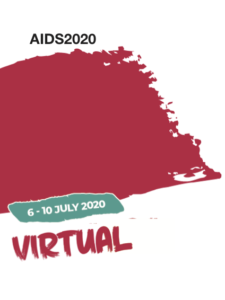Paediatric dolutegravir dosing at AIDS 2020
28 August 2020. Related: Conference reports, Paediatric care, World AIDS 23 Virtual 2020.
Matching paediatric pharmacokinetic (PK) exposures to those in adults works well for dose finding of dolutegravir (DTG)-containing formulations, despite higher variability in paediatric exposures. [1] These data from IMPAACT 1093 were presented at AIDS 2020.
The approval of antiretroviral dosing in children mostly depends on matching adult PK exposure parameters. But, higher variability in paediatric exposures suggests that efficacy cannot be assumed to be identical to that in adults.
IMPAACT P1093 is a phase 1/2, open-label PK and safety study.
The investigators evaluated the relationship between DTG exposure and virologic response in children. To do this they modelled the probability of viral load 50 or <400 copies/mL at weeks 4, 24 and 48 as associated with DTG exposure (C24, Cavg or AUC0-24) based on sampling between days 5–10, weeks 4, 12 and 24.
Covariates included baseline viral load, CD4 count, CDC HIV infection stage and baseline viral load >100,000 copies/mL.
At weeks 4, 24 and 48, there were 143, 135 and 112 viral load measurements available, respectively.
The investigators found DTG exposure parameters (C24, AUC0-24 and Cavg) gave a wide range of exposures which were not predictive of viral response within the dose ranges tested.
They suggested that the doses tested maintained exposures near maximum drug effect and added that this might also be because of the small sample size for each dose and high PK variability.
Baseline VL >100,000 copies/mL was a significant predictor of response and associated with a lower probability of achieving <50 copies/mL (p<0.001).
“These results suggest that matching paediatric PK exposure parameters to those in adults is a reasonable approach for dose determination of DTG-containing formulations”, they concluded.
comment
Data from IMPAACT P1093 on safety and PK (as well as two weight-band-based PK substudies of the PENTA ODYSSEY trial) informed the recent FDA approval of 10 mg tablets and 5 mg paediatric tablets for oral suspension. [2]
This approval gives more antiretroviral options to infants and young children – a woefully underserved population.
A generic 10 mg scored, dispersible formulation of DTG, to simplify weight-band dosing, is currently under review by the FDA (with approval expected by the end of the year) and another version close behind.
References
- Singh R et al. Plasma exposure-viral load response analysis for dolutegravir in children with HIV-1: results from IMPAACT P1093. AIDS 2020 virtual. 6–10 July 2020. Oral abstract OAB0706.
https://cattendee.abstractsonline.com/meeting/9289/presentation/91 (abstract) - Clayden P. FDA approves dolutegravir formulations to treat infants and young children. HTB. 26 June 2020.
https://i-base.info/htb/38222


 Polly Clayden, HIV i-Base
Polly Clayden, HIV i-Base